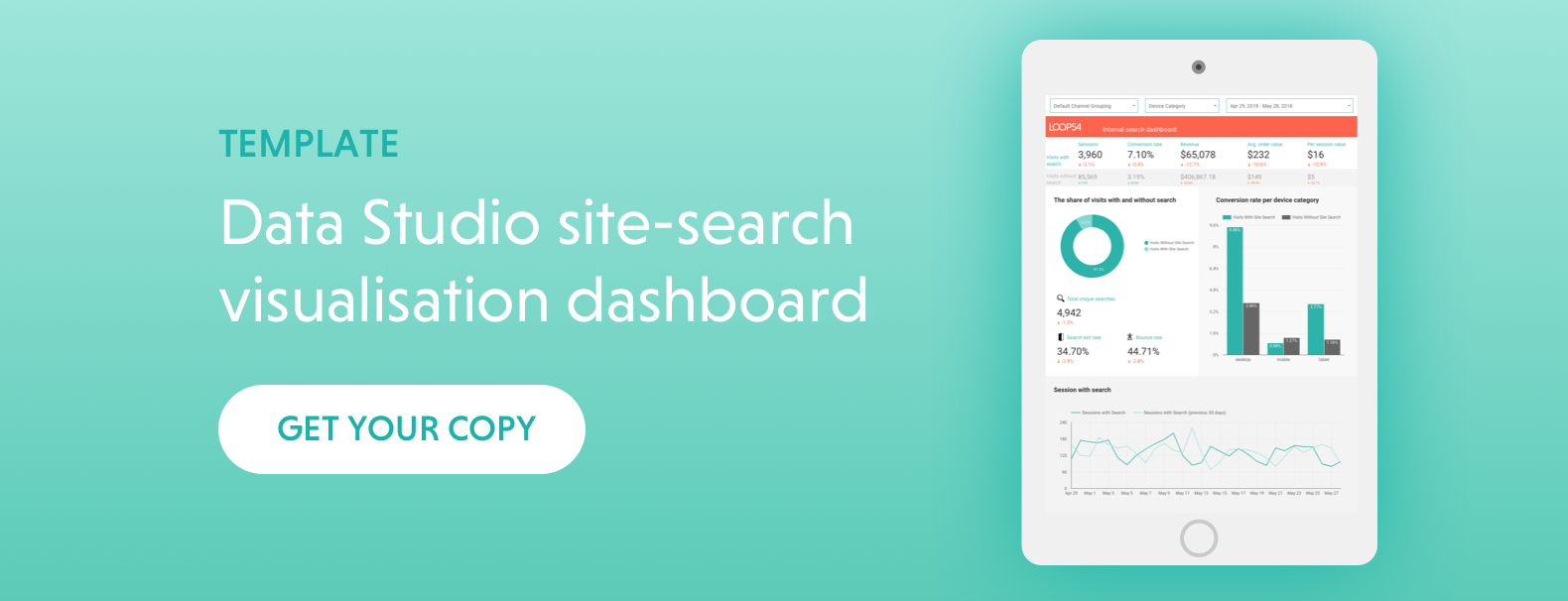One of the biggest benefits of implementing site search on your e-commerce site is the sheer wealth of customer information you can collect, analyse, and utilise to improve your customer experience and increase your sales.
But how should you harness this information for the best results?
What’s the point of collecting site search data?
The site search data you collect provides a direct insight into your users’ shopping behaviour. It’s as if your customers are sharing their shopping list with you. Armed with this information, you can work on improving your site to maximise revenue and improve user experience.
There are all sorts of insights to be gleaned from this rich source of data – you can’t afford to not take advantage of it.
How to make the most of your site search analytics
Levels of usage
How many people are actually using your site search? With visitors who use site search being almost twice as likely to purchase than those just browsing, encouraging people to search is crucial. Understanding your levels of site search usage can inform the design of your search box. If usage levels are low, perhaps consider re-positioning your search to a more central location or making it larger on the page.
Know your top search terms
Understanding your most popular search terms is helpful in several ways. Firstly, it allows you to optimise your site to make it easier for visitors to find popular products. What's more, it lets you implement auto-complete to suggest your most popular products in real-time as your users search.
Secondly, knowing your top search terms can help when it comes to stocking products. If users are frequently searching for a product you don’t sell, this is great information to take to your buyers to suggest they start stocking.
Improve your marketing
Knowing which keywords are being searched for most frequently can seriously improve your marketing efforts. This data can inform your PPC campaigns and Google search keyword bids, and be used to help your marketing teams create campaigns that appeal directly to your customers.
Uncover poor results
When we talk about poor results, we’re not just talking about searches that turn up null-results.
Poor results can also refer to when a search term serves up hundreds of thousands of hits. This can be even more frustrating for users when there’s no faceted search system in place to filter the results. Use analytics from your site search data to compile a poor results report and investigate how these can be improved.
Click depth
Click depth refers to how far into your search results people are clicking. Are your customers having to click through to pages 3 and 4 to find what they’re looking for? This can be improved by cross linking results with popular search terms to move those products further up the results list.
Measure your exit rate
Using your site search data to see the number of visitors who exit your site after searching is important. It’s usually because they haven’t been able to find what they’re looking for. Optimise your results or think about stocking new products if exit rates are particularly high for a specific search term.
What devices are visitors using?
With Statista reporting that over half of global internet traffic now comes from mobile, ensuring you optimise your site search for mobile devices is vital. Take note of the popular search terms and site search usage levels across desktop, tablet, and mobile, as these can differ wildly and inform how you tune your site search for different devices.
Which facets are users applying?
Knowing which facets your customers use, and the order in which they apply them, can really enhance your site’s user experience and help you make more strategic design decisions. Are there certain facets that, when applied, generate more sales? Perhaps certain colours are more popular than others? Move these facets further up the navigation bar to ease your customers towards purchasing.
Final thoughts
This article only scratches the surface of the many ways you can harness your site search data to continuously improve your e-commerce site in terms of design, user experience, and sales performance.
All decisions should be data-driven when it comes to e-commerce businesses Thankfully, site search provides a wealth of customer data – you just need to know what do with it.



